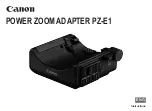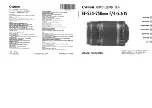
6
Electrical installation
6.1
Wiring instructions
NOTE
Pre-assembled cables can be found online at:
•
NOTICE
Faults during operation and device or system defects!
Incorrect wiring may result in operational faults and defects.
■
Follow the wiring notes precisely.
Recommendation: use shielded cables.
The electrical connections of the device are configured as M12 round connectors.
The protection class stated in the technical data is achieved only with screwed plug
connectors or protective caps.
Configure the circuits connected to the device as ES1 circuits or as SELV circuits (SELV
= Safety Extra Low Voltage). The voltage source must meet the requirements of ES1
and PS2 (EN 62368-1) or SELV and LPS (EN 60950-1).
Connect the connecting cables in a de-energized state. Do not switch on the supply volt‐
age until installation is complete and all connection work on the device and controller
has been finished.
Wire cross-sections in the supply cable from the customer’s power system must be
implemented in accordance with the applicable standards.
In the case of open end cables, make sure that bare wire ends do not touch. Wires
must be appropriately insulated from each other.
If the supply voltage for the device is not supplied via the CDB650-204 connection
module, the device must be protected by a separate slow-blow fuse at the start of the
supply circuit. The required fuse rating (nominal value) is maximum 2 A slow-blow.
Shielding requirements
■
To ensure a fault-free data transmission, an effective and comprehensive shielding
solution must be implemented.
■
Apply a cable shield at each end, i.e. in the control cabinet and at the device. The
cable shield of the pre-assembled cables is connected to the knurled nut and thus
also to a large area of the device housing.
■
The cable shield in the control cabinet must be connected to a large area of the
signal ground.
■
Take appropriate measures to prevent equipotential bonding currents flowing
through the cable shield.
■
During installation, pay attention to the different cable groups. The cables are
grouped into the following four groups according to their sensitivity to interference
or radiated emissions:
°
Group 1: cables very sensitive to interference, such as analog measuring
cables
°
Group 2: cables sensitive to interference, such as device cables, communica‐
tion signals, bus signals
ELECTRICAL INSTALLATION
6
8022395/19OK/2020-12 | SICK
O P E R A T I N G I N S T R U C T I O N S | TriSpectorP1000
25
Subject to change without notice
















































